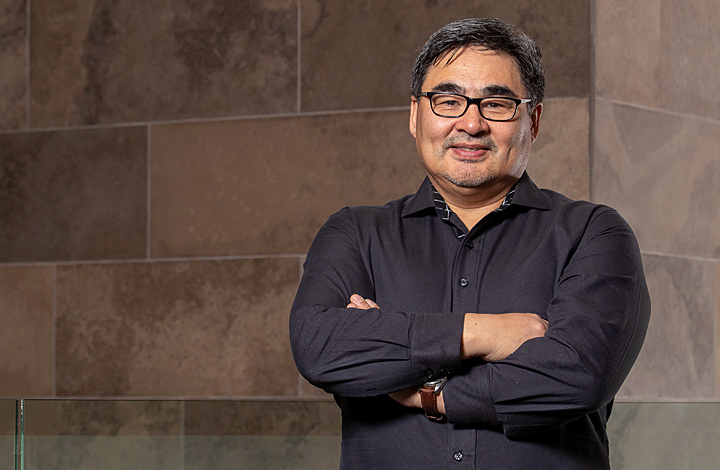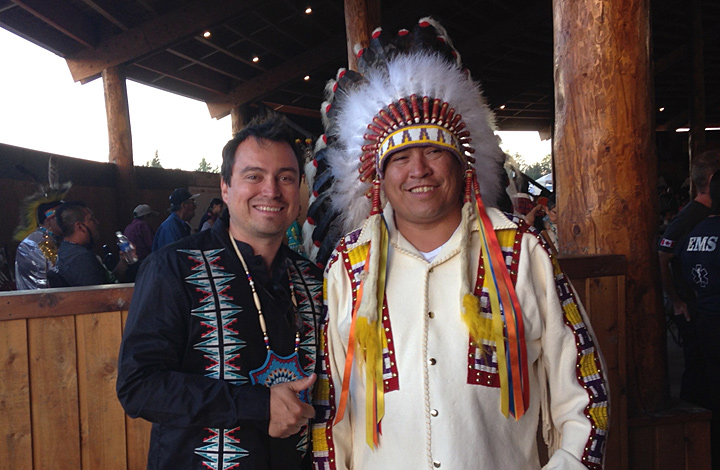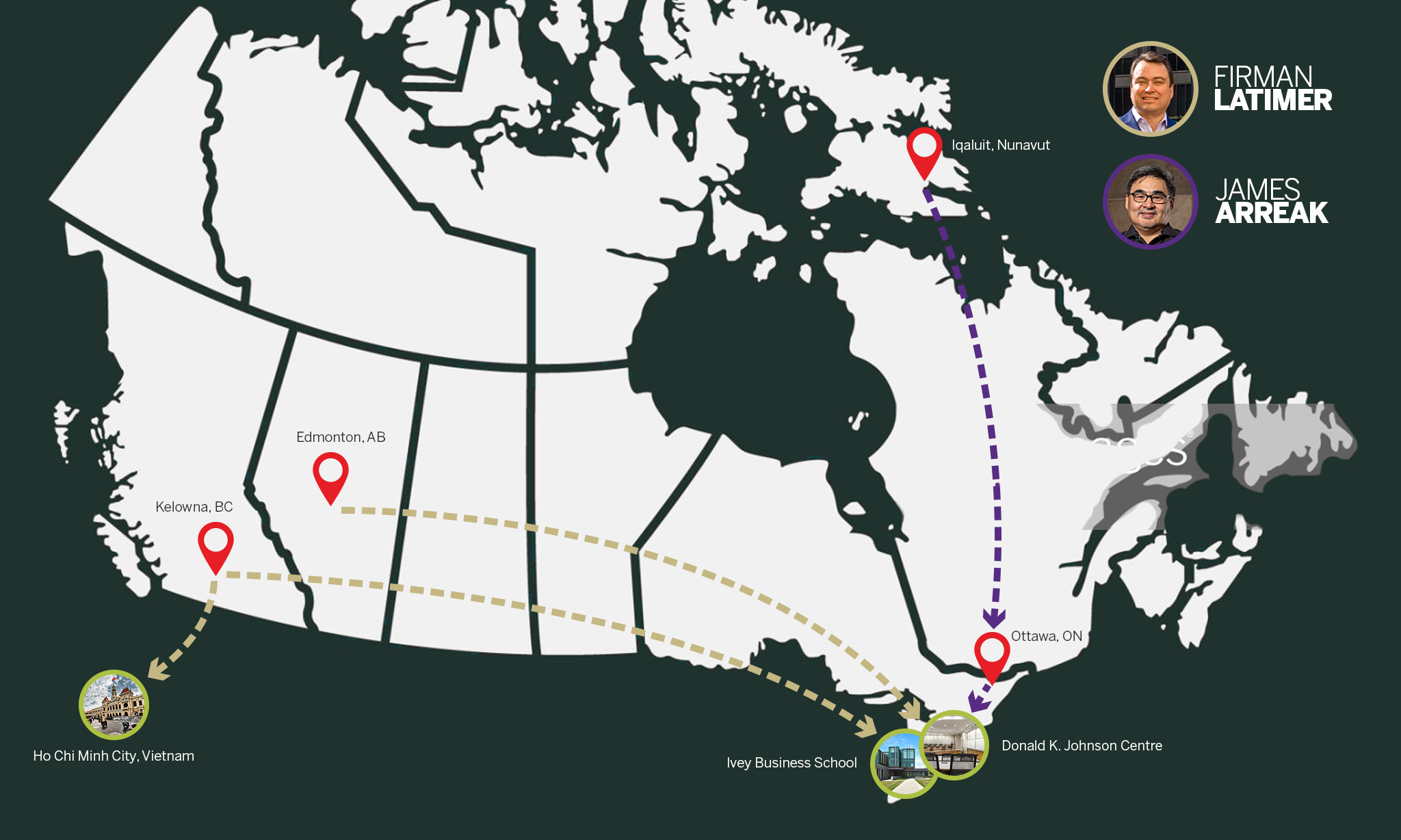Written by Dawn Milne
Most people do an Executive MBA to advance their careers. James Arreak and Firman Latimer, two current students in Ivey’s Executive MBA (EMBA), want to advance their communities.
Arreak is Interim Executive Director of the Coalition of Nunavut District Education Authorities and is travelling between Iqaluit, Nunavut and either Toronto or London, Ont. – depending on his schedule – for the program. He began Ivey’s EMBA in February 2019 and will finish in June 2020.
He will use insights from the program to create an infrastructure strategy for Nunavut to encourage the investments needed for growth.
“Through the case work at Ivey, I’m learning lessons from other parts of the world. We are also doing work on strategy, character, and leading through change, and that is helpful,” he said. “The skills I’m developing will help me to become a better leader so I can continue to help transform Nunavut.”
Latimer has similar aspirations. He is CEO of OKIB Group of Companies with the Okanagan Indian Band, a First Nations community in the North Okanagan region in the interior of British Columbia, and is using the tools from the program to create the Band’s economic development model. He began the EMBA in September 2018 and will finish in January 2020.
“I’ve learned to think broader picture and more long term,” he said. “It will help me to make decisions that have a positive impact on all stakeholders so our organization can be more sustainable.”
Ivey’s Executive MBA is an MBA program structured specifically for busy professionals.
Sharing the Indigenous perspective in the Canadian business environment
Sharing the Indigenous perspective in the Canadian business environment
Arreak tells a story that’s common in northern Canada. A ship delivering supplies to Nunavut gets stuck in the ice. It’s there for 15 days. To recoup costs, the supplier has to charge more.
From basic food items to prescription drugs, most goods and services cost more than the national average in Nunavut because suppliers need to pass down to the consumer the additional costs they have when delivering to remote areas.
Arreak has shared some elements of the Indigenous perspective with his EMBA classmates and has in turn learned from their experiences.
“I’ve shared some of my perspectives and experiences around mining development; I come from such a different part of the world and it takes context to understand my story,” he said. “We learn from each other. The combination of your classmates, your learning team, and the professors provides a unique learning experience.”
Latimer previously worked as COO and head of business development for O'Chiese First Nation in central Alberta when the band acquired the Jackpot Casino in Red Deer. For an analytics project, his EMBA group created a business model for a casino and he shared his firsthand insights.
“I’ve explained some Indigenous history and the way the bands are set up. It’s a different framework for doing business. While the model is somewhat similar to other corporations, it’s more of a community-based structure,” he said. “There seems to be a lot of interest in how a band compares as there are very few opportunities for outsiders to be exposed to our type of organization.”

“We are all journeying together.”
James Arreak, EMBA ’20 candidate
Going the distance
Going the distance

Firman Latimer with the late chief Darren Whitford of the O'Chiese First Nation at the O’Chiese pow wow.
Although the EMBA has a flexible format designed specifically for busy executives, it’s still a big commitment – especially when there are more than 3,000 kilometres between Nunavut and London, Ont.
Arreak said he couldn’t do it without the support of his wife and six children, who keep him focused on his longtime goal. He said he wanted to do his MBA right after completing his undergraduate degree in Business Administration in 1996.
“Back then I wanted to jump right into my MBA, but then life happened and I had to put it on hold. Then later, when I was transitioning between jobs, I thought it was a good time to pursue it,” he said.
He said there is a learning curve when returning to school after a long break. His advice: Be patient.
“There are a lot of challenges, from trying to understand new concepts to the cross-cultural shock. For Indigenous Peoples in particular, you’re going to go through a lot of cross-cultural issues,” he said. “I’ve appreciated the support I’ve received from my classmates. We are all journeying together.”
For Latimer, taking the EMBA was a chance to build on his past education and experience. He has a Commerce Degree in Business Management and was a small business owner.
“Taking the EMBA is an eye-opener. It provides you with tools to help you think more broadly. Hearing people’s perspectives on the different cases helps to expand your mind,” he said. “I wish I had taken the program earlier. I would have made different decisions and taken other approaches in business.”
Opening doors for others
Opening doors for others
By sharing their stories, both Arreak and Latimer said they hope they will inspire other Indigenous Peoples to consider pursuing an EMBA or other higher education, even though it can be especially challenging.
“From a First Nations perspective, if you’re raised on a reserve, it’s harder to pursue higher education. I had the opportunity to because I wasn’t raised on a reserve. I went through different channels,” said Latimer, a member of the Serpent River First Nation through his mother, who was raised in the community. “Having an education opens doors. It’s particularly important for Indigenous Peoples to have access to education so they can bring it back to their communities. It will help resolve some of the negative issues that are happening at the national level within the First Nations communities.”
Arreak said improving access to education for Inuit is a top priority.
“Education is the key for Nunavut. To transform Nunavut, we need people who understand both the culture and business, through skills they’ve learned from undergraduate, graduate, or doctorate training,” he said. “I’m hoping my story will encourage Indigenous Peoples to pursue an EMBA. If I can encourage one person, then I’ve done my part.”
Why Ivey?
James Arreak
Arreak had long wanted to do an EMBA, but was waiting for the right time in his career. While in a previous role with the Royal Bank of Canada, his colleague, Bill Jandrisits, HBA ’83, MBA ’90, began speaking with Arreak about the program. Arreak then decided Ivey was the place for him. He applied and was thrilled to be accepted into the EMBA program.
“I love the experience around learning,” he said. “The professors tell us there’s a process and we need to trust the process. Over time, I’ve come to trust it.”
Firman Latimer
While he was working with the O'Chiese First Nation Band, the Chief passed away and Latimer was asked to fill the Executive Director role. He decided it was time to upgrade his business skills. He began researching different MBA and senior management programs and came across the Ivey EMBA. The 15-month while-you-work format appealed to him. He also liked that classes are held in the heart of Toronto's financial district.
“Being in Toronto you get exposure to a lot of the central markets – it’s the hub of Canada,” he said. “Ivey’s case method also appealed to me because you get a broad perspective. That’s important to me.”
So far, Latimer has taken 14 flights to attend the program. Here is a break-up:
11 to Toronto, 3 to London (From either Edmonton, Alta. or Kelowna, B.C. He lived in Edmonton during first term). He will fly from Kelowna to London again for graduation in spring 2020.
Plus, 1 flight from Kelowna to Ho Chi Minh City, Vietnam for an international trip that was part of the program.
Arreak has taken 8 flights for the program to date, travelling from Iqaluit, Nunavut to Ottawa, Ont. by plane and then usually taking a train from Ottawa to Toronto or London, Ont. Each trip costs $3,500.
